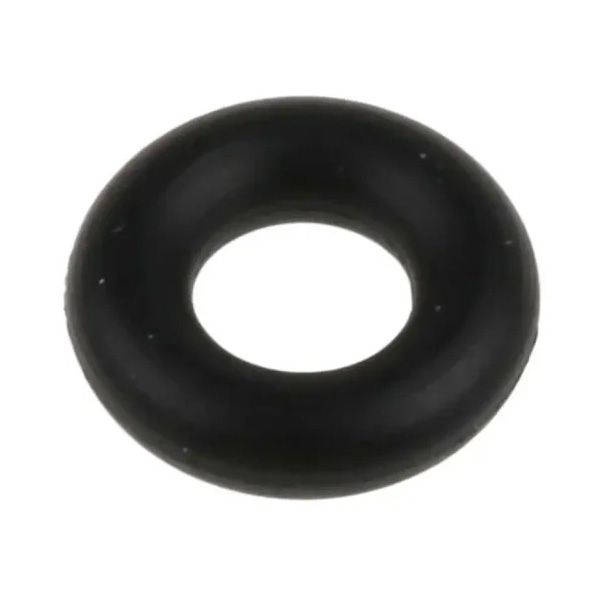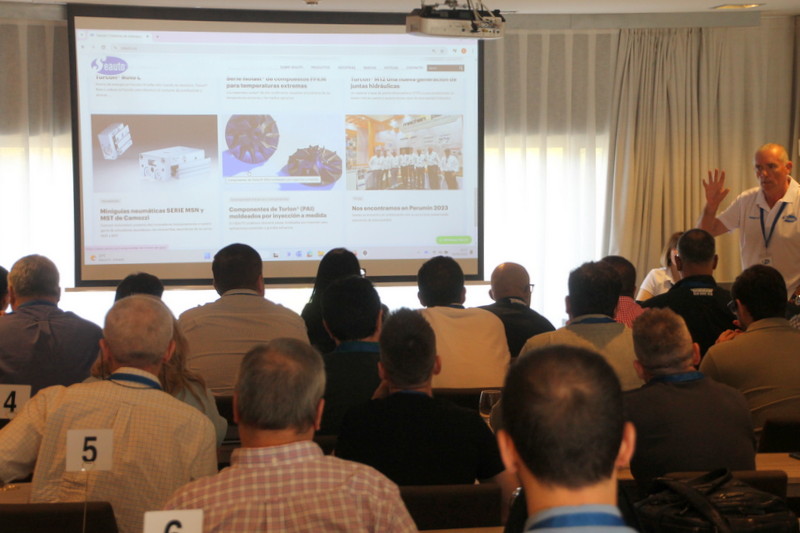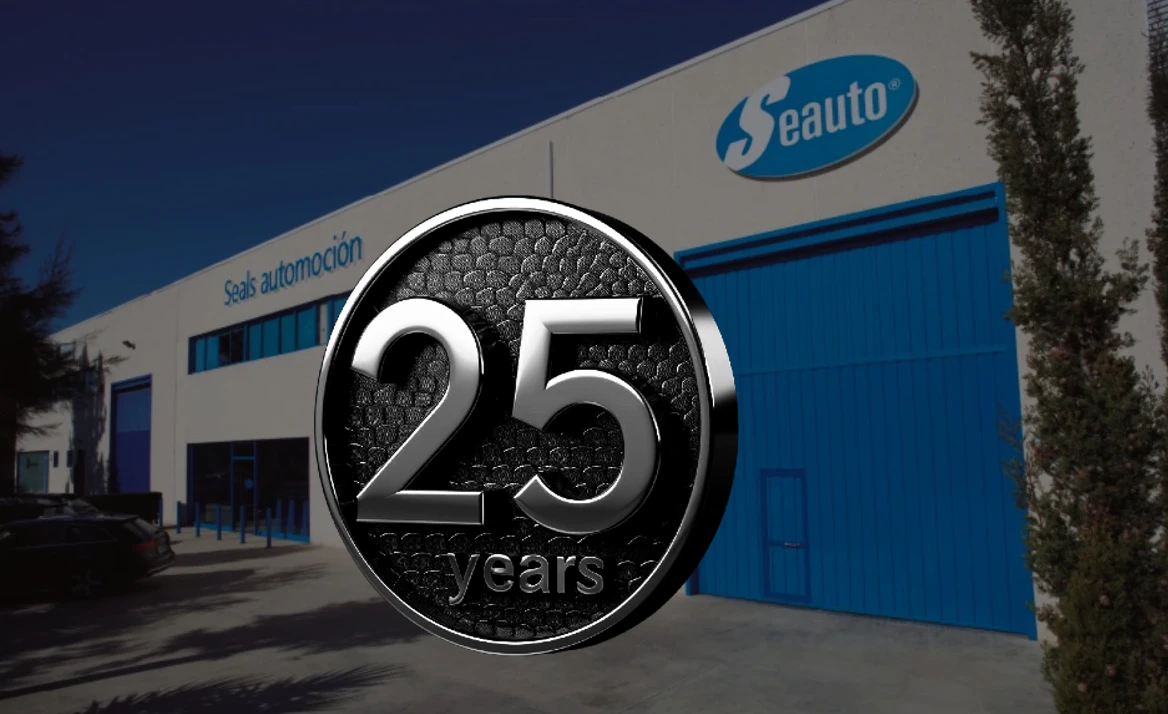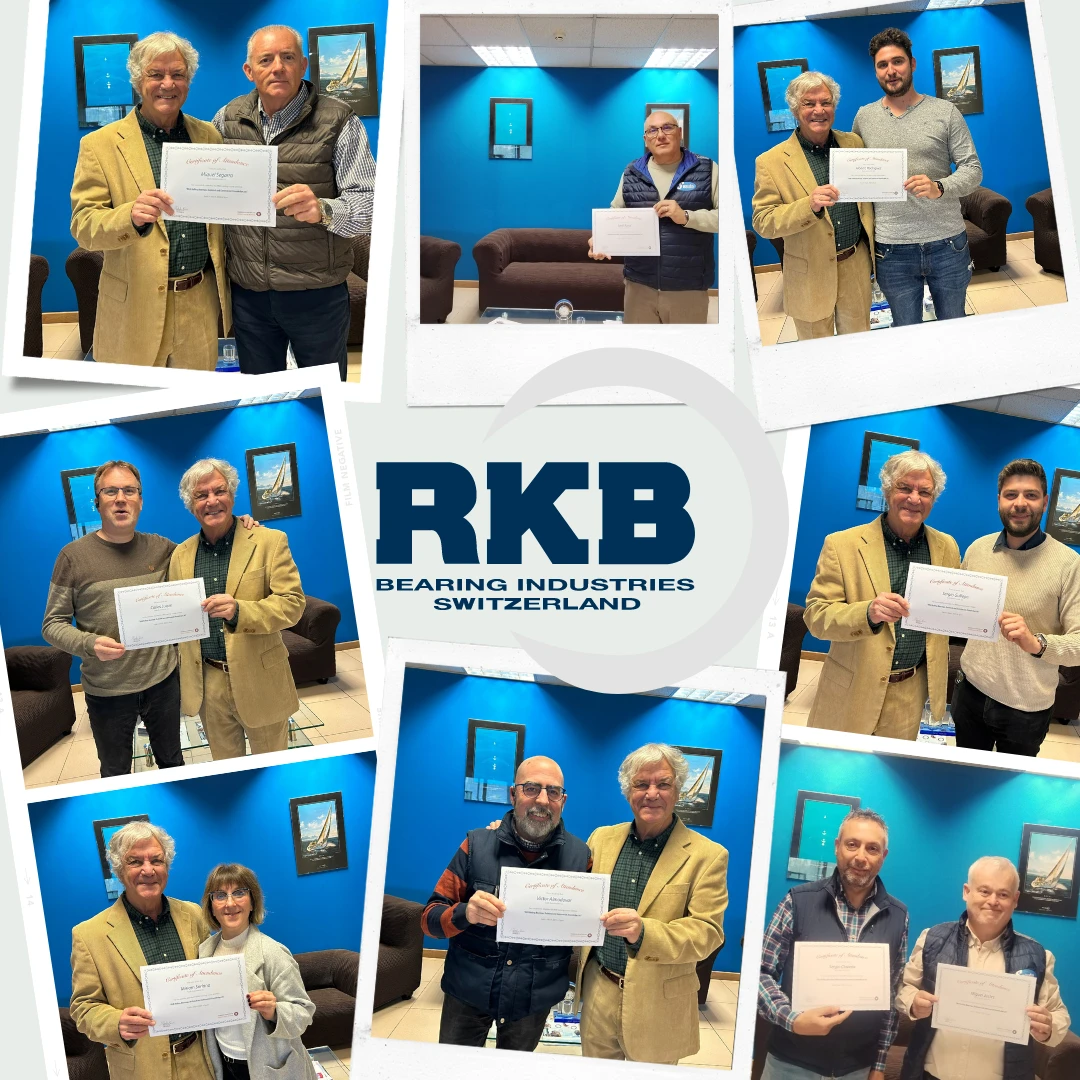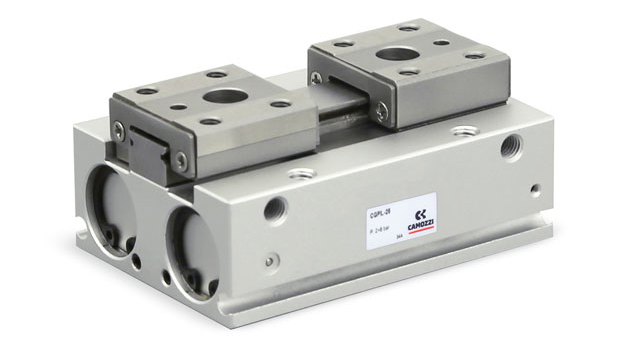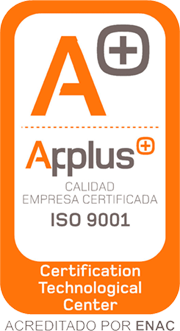Silicone is an elastomer that remains stable, flexible and non-reactive under extreme conditions, making it ideal for seals, gaskets and O-rings. O-rings are molded products that are placed between two mechanical parts to create an airtight seal that prevents leakage of fluids or gases and keeps contaminants away. The choice of a silicone O-ring provides greater flexibility and performance for a wide variety of applications. With a range of properties and compositions available, you can easily customize your silicone O-rings for any application. This could also include vulcanized or spliced O-rings.
Silicone properties
Silicone has a wide range of uses due to its ability to withstand temperature extremes from -58° F to +450° F. Even at very low temperatures, where many materials become brittle, silicone remains flexible. Silicone O-rings are extremely clean and do not retain or transmit odors or flavors, making them highly sought after for food, medical and semiconductor applications. Other useful properties of silicone are:
- Resistant to fungal growth
- Withstands hot air, UV rays and ozone exposure well
- Weather resistant
- Resists damage caused by engine, transmission, animal and vegetable oils and greases.
- The compound may impart qualities of electrical resistance, conductivity or flame retardancy.
- It has a hardness range of 30 to 80 Shore A durometers, with a standard hardness of 70 Shore A durometers.
- Can be compounded to meet FDA, USDA, MIL-STD-413C, MIL-STD-105E and MIL-I-45208A specifications.
Compatibility of silicone O-rings
Like all materials, silicone O-rings have characteristics that are more suitable for some uses and conditions than others. The best way to classify them is as follows:
Recommended applications: Silicone O-rings are recommended for applications requiring good electrical properties and resistance to heat, cold, ozone, ozone, curing, weathering, acid, chemicals, oil, water vapor and flame.
Less suitable applications: Silicone O-rings are not recommended for applications requiring high levels of tensile strength, impermeability and significant abrasion, tear or dynamic resistance.
Silicone O-ring applications
The properties of silicone O-rings allow their use in numerous industries and applications, including:
- Automotive. They are used to seal fluids, lubricants and refrigerants in fuel and brake systems, engines and transmission components, and automotive air conditioning systems.
- Aviation and defense. It is used for sealing applications in aircraft, helicopters, weapons systems and ships.
- Construction and agriculture. Used in heavy equipment and hardware
- Electronics. It is used to seal out dust and other contaminants that could damage delicate electronic components.
- Food and beverages. Prevents cross-contamination of food and beverage processing equipment and utensils.
- Medical devices. It is used in pumps, syringes, filtration devices and connectors.
- Pharmaceuticals. It is used in drug production applications and in miniature components for laboratory and analytical equipment.
- Semiconductors. Used in the manufacture of process equipment and integrated circuits
- Utilities and HVAC. It is used for sealing heating, cooling, sprinkler, potable water and compressed air systems.
Qualified sealing experts
When choosing the right O-ring for your application, material selection is critical. Arizona Sealing Devices has over 30 years of experience in supplying O-rings and other sealing solutions such as plugs, caps, gaskets and kits in a wide variety of materials. Our talented and highly experienced team thoroughly researches each product in order to recommend the ideal solution and answer any questions you may have about our materials and products.
We are committed to meeting or exceeding our customers’ expectations in terms of quality, selection, functionality and customer service. For more information about our inventory, please see our product catalog or contact us today if you have any questions.
When choosing between different types of O-rings, a common dilemma is whether to opt for rubber or silicone O-rings. In this blog, TRP Polymer Solutions evaluates the pros and cons of rubber versus silicone O-rings to help you in your decision-making process.
O-rings are essential for the efficient operation of countless machines in industry. Over the years, a wide variety of elastomers have been developed in the search for the optimum O-ring material. Within that range, we can count not one, but several types of synthetic rubber, including silicone, which is distinguished from other rubbers by its atomic structure.
Types of O-ring materials
Generally speaking, all elastomers are considered rubbers in that their dimensions can alter under stress and return to their original shape once the stress is removed. Below, we highlight some of the most common synthetic elastomers or rubbers, including silicone, that can be converted into rubber O-rings.
FKM
Fluoroelastomer, or FKM as it is commonly known, contains strong carbon-fluorine bonds, giving it high chemical, thermal and oxidation resistance. It is a high performance synthetic rubber especially suitable for applications with aggressive chemicals and fuels. FKM has excellent high temperature resistance and can be used in explosive gas environments, making it a widely used rubber O-ring material in the oil and gas industry.
FFKM
Perfluoroelastomer or FFKM combines the chemical resistance of polytetrafluoroethylene (PTFE) with the elasticity of FKM. Its fully fluorinated backbone ensures chemical, oxidative and thermal stability and is ideal for demanding applications. As such, FFKM rubber O-rings provide high sealing integrity, reduced maintenance and operating costs and increased safety. We have developed our unique FFKM TRPlast range, which offers some of the highest levels of performance available.
EPDM
EPDM is a synthetic rubber with extremely inert chemical properties. With good overall performance (although not recommended for use in contact with fuels and oils), EPDM offers excellent resistance to weathering, heat, ozone and steam. Commonly used as a low-cost polymer with good processing capabilities, EPDM’s highly inert nature makes it less adhesive than other elastomers, which can be a limitation.
Nitrile
Nitrile was born out of the search for an elastomer that could resist oil and fuels. Also known as Buna-N or Perbunan, nitrile has excellent oil and fuel resistance, making it a useful material for rubber gaskets and O-rings. Several more advanced rubber materials, such as FFKM, have overtaken nitrile in terms of performance and resistance to modern fuels. However, nitrile is still a useful solution.
Silicone
Silicone consists of a backbone of silicon atoms with alternating oxygen atoms. These high-energy silicon-oxygen bonds make silicone more heat resistant than many other elastomeric materials. This inorganic backbone also makes the silicone more resistant to fungi and gives it excellent weathering properties. The strength of the silicone is not adversely affected by the choice of color. However, it is not considered a particularly resistant material and breaks relatively easily.
In conclusion, silicone O-rings can be used in high temperature applications or where weathering damage may be a problem. However, due to its poor tear and abrasion resistance, silicone should only be used in static and not dynamic applications. In these cases, there are other rubber O-ring materials that offer a more complete package of advantages, such as thermal stability and chemical resistance.
As an expert O-Ring manufacturer, TRP Polymer Solutions can develop the ideal sealing solution for you. For more information on the different types of O-ring materials available and why you should choose an O-ring over a rubber gasket, or to discuss how we can help you meet your application requirements, call TRP Polymer Solutions today on +44(0)1432 268899 or email sales@trp.co.uk.
